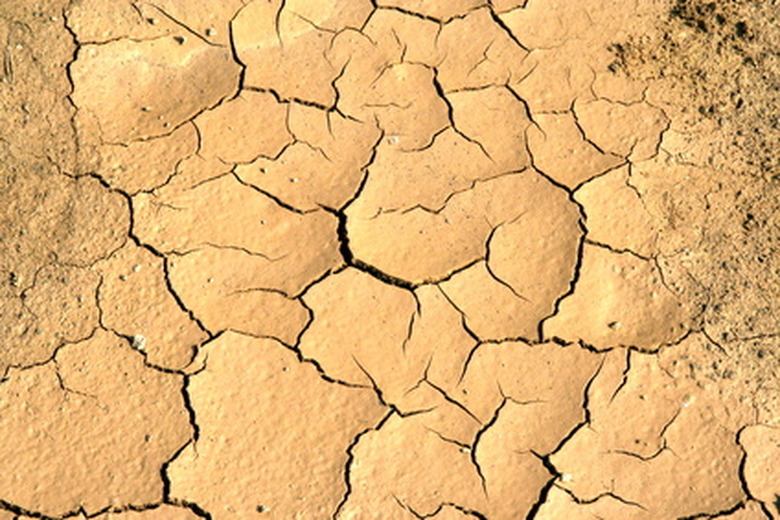Nutrient Value Of Gypsum Fertilizer
Gypsum fertilizer is used to aid soil structure and provide trace nutrients for plants without altering the pH of the soil. For gardening purposes, gypsum is sold dry as a powder, though it is also used to make wall board. Because of the value of gypsum as a fertilizer, recycled wallboard is increasingly used to improve the quality of the soil after construction on a site is finished.
Chemical Nutrients
Calcium oxide is a strong base, while sulfur dioxide is a strong acid. When the two are combined, the resulting salt is calcium sulfate, or gypsum. The acidity and alkalinity cancel out, forming a neutral substance. The major nutrients in gypsum are calcium and sulfur, both of which are essential to plant life and processes.
- Gypsum fertilizer is used to aid soil structure and provide trace nutrients for plants without altering the pH of the soil.
- For gardening purposes, gypsum is sold dry as a powder, though it is also used to make wall board.
Effect on Plants
Calcium helps build cell walls and is essential to internal transport systems within plants. A lack of calcium usually shows up as distorted, underdeveloped tips of young leaves and yellowing in the leaf. Sulfur is essential to protein and oil production in plants and their seeds and in the successful maturation of plants and their fruits. Plants are spindly when sulfur is insufficient. Deficiency also causes pale or yellow leaves with even lighter-colored veins.
Effect on Soil
Gypsum can help prevent the surface of the soil from crusting. It can also break up chemical bonds in soils, especially some types of clay soil, that prevent the soil from draining properly or allowing air circulation. It adds nutrients without having a strong effect on soil pH.
- Calcium helps build cell walls and is essential to internal transport systems within plants.
- A lack of calcium usually shows up as distorted, underdeveloped tips of young leaves and yellowing in the leaf.
Alternatives
While gypsum is a useful fertilizer and soil amendment, there may be better alternatives. Compost often contains sulfur and calcium, especially if eggshells were added to the compost pile, and it adds many other nutrients and soil-building properties as well. Lime adds calcium to the soil while amending low pH levels toward neutral. Sulfur fertilizer comes in many forms, and can amend high pH levels toward neutral.
Considerations
It is difficult to over-amend with gypsum. So if you have access to recycled wallboard, consider using it to improve the texture and trace nutrient levels in your soil rather than allowing it to take up space in a landfill. At an estimated 15% of the waste created from constructing new homes, there's more than enough gypsum wallboard to amend just about any site that might benefit from it. (See reference 1)
- While gypsum is a useful fertilizer and soil amendment, there may be better alternatives.
- Compost often contains sulfur and calcium, especially if eggshells were added to the compost pile, and it adds many other nutrients and soil-building properties as well.
